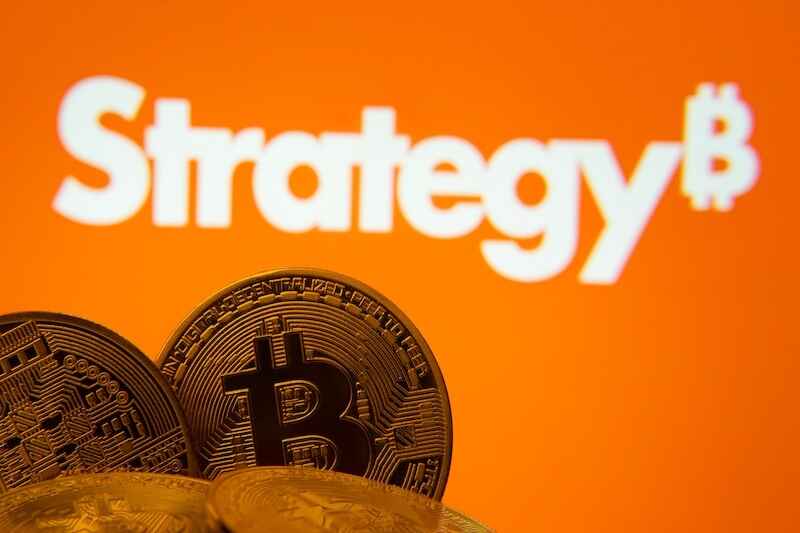Despite the Binance Fiasco, Crypto Isn’t Going Anywhere
Joe Hill|June 13, 2023

It looks like Washington has decided on a “hate the sinner, love the sin” approach to cryptocurrencies.
Okay… maybe “love” is strong.
But these days, individual cryptos aren’t attracting as much ire from regulators as the exchanges that make them available to the masses.
[It’s] not the cryptos themselves that the government is going after. … It simply wants anybody selling a security to be a licensed security dealer.
That’s right. If you fill out gobs of paperwork and hand over untold sums of revenue, you too can freely operate a, uh, “decentralized” securities exchange.
Well, you can for now, anyway.
Never mind the fact that those in charge still seem to be at odds about how to proceed with digital currencies and their digital dealers…
Harsh Words
If you’ll recall, House Majority Whip Tom Emmer called out SEC head Gary Gensler back in April for his poor approach to regulation. He said Gensler’s regulatory style “lacks flexibility and nuance.”
You’d be hard-pressed to find anyone in the crypto world who disagrees.
Lunging for the jugular, Emmer also called Gensler an “incompetent cop on the beat.” It must’ve been a welcome moment of excitement for those poor souls who sat through the full five-hour session held by the House Financial Services Committee.
And this all came just weeks after a public tongue-lashing by crypto industry insiders who were frustrated by the lack of clear guidance from the SEC.

We don’t envy Gensler or his team.
The good news – for crypto investors, at least – is that in spite of the shoddy regulatory framework in the U.S., crypto doesn’t appear to be going anywhere.
A Rosier View
We may be floundering when it comes to smart crypto regulation, but governments around the world are paving the way for mass adoption.
The EU just voted in favor of a landmark agreement that will enact consistent regulations for crypto exchanges across the entire bloc.
More than a dozen countries have either piloted or launched their own central bank digital currencies.
And Canada, while still treading cautiously into the realm of crypto, was the first to approve a Bitcoin ETF, allowing investors of all stripes to capitalize on the action. (It’s up 55% so far this year.)
So, when we look at the state of things globally, the picture becomes much rosier.
That also helps to explain why, even though major exchanges like Coinbase, Kraken and now Binance have had a rough go of it recently, many cryptos are doing gangbusters this year.
Crushing Wall Street’s Finest
We can see the overall trend quite clearly.
The total size of the crypto market is back up over a trillion dollars, a threshold that was first breached at the tail end of 2020.

On their own, Bitcoin (BTC), Ethereum (ETH) and Ripple (XRP) are all up between 50% and 60% year to date. They’re crushing even the mighty Nasdaq, which is having a heck of a year itself.
But those are the “big boys” of crypto, with market caps in the tens and hundreds of billions of dollars…
What about the hundreds of lesser-known coins and tokens… the ones that aren’t getting mainstream attention or making the rounds on Twitter?
As we’ve long said, these cryptos, while packing a greater risk, can offer huge short-term returns…
Three Digital Dominators
Take tomiNet (TOMI), for example. Its token represents a network that aims to rival the internet itself. Per the group’s white paper…
tomiNet is a parallel worldwide web, designed as an alternative to the government-controlled and censored web, initially targeted at users in locations where their access to open information is limited, or where businesses cannot ensure their domain-based property rights on the existing Web2 infrastructure.
It’s a lofty concept that’s attracting many fans… and investors. For the year, TOMI is already up more than 1,500%.
Similarly, the folks behind SingularityNET (AGIX) are looking to decentralize artificial intelligence (AI), creating a “fair distribution of power, value and technology in the global commons.”
With roots that go all the way back to 2017, AGIX is a downright veteran in the crypto space at this point. Its market cap recently crossed the $300 million mark, no doubt bolstered by the sudden rise of AI.
The token has shot up 450% so far in 2023.
And lastly we have Conflux (CFX). Its mission is to break down borders – geographical and technological – between blockchains.
Interestingly, the network is based in China, whose relationship with crypto has been complicated at best… and hostile at worst. Still, Conflux boasts that it’s the country’s “only regulatory compliant, public and permissionless blockchain.”
It’s betting big on growing acceptance of cryptos in China and all over, which would no doubt make its project all the more essential.
The mission obviously resonates with investors. CFX is up 873% for the year.
Whether any of these cryptos will be household names a decade from now is anyone’s guess. But for short-term speculators, they’re proof that digital currencies still deserve plenty of attention.
Crypto isn’t going anywhere.



